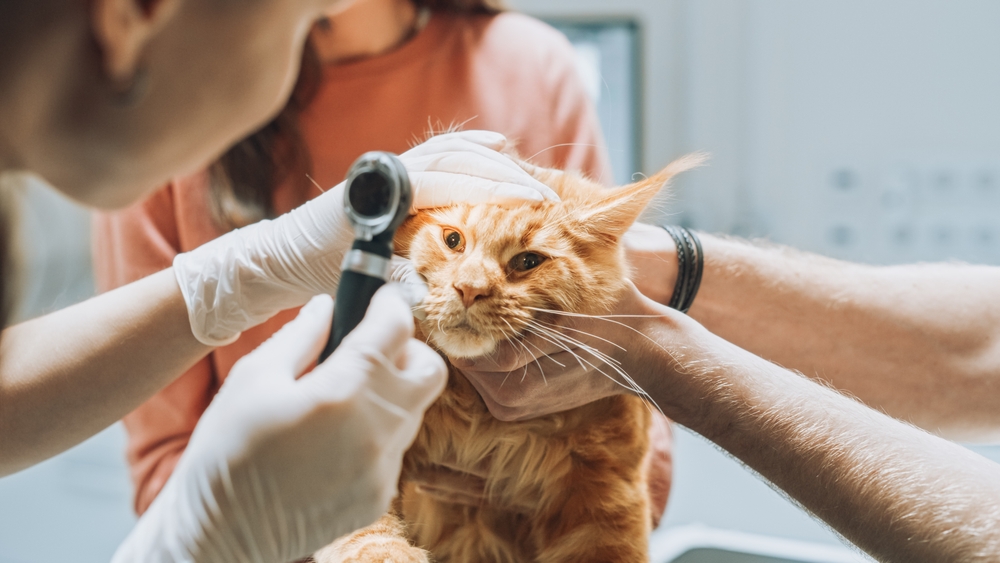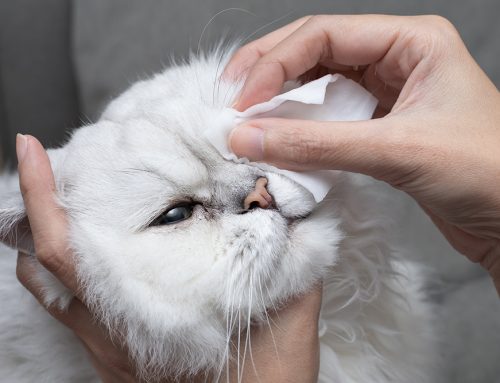The cornea is the highly specialized clear tissue that covers the front of your pet’s eyes. The highly specialized tissue has multiple cell layers and functions to nourish and protect the eyes and allow crisp, clear vision. Sometimes the corneal cells can malfunction or be injured, leading to lesions that appear as white spots or cloudiness. The lesions may be subtle at first and may or may not progress, depending on the underlying cause. Veterinary Vision Center shares potential causes of white spots on your pet’s eyes and treatment or long-term management options.
#1: Corneal dystrophy in pets
Corneal dystrophy commonly causes white or cloudy spots in dogs. The cornea has several layers (i.e., the superficial epithelial, middle stromal, and deep endothelial layers). Dystrophy in the superficial layers often occurs in young dogs, leading to small opaque spots that typically do not interfere with vision, progress, or cause any pain or discomfort, so treatment usually is not necessary. Some breeds are predisposed to superficial corneal dystrophy, including:
- Siberian husky
- Cocker spaniel
- Bichon frise
- German shepherd
- Collie
- Shetland sheepdog
- Cavalier King Charles spaniel
Endothelial dystrophy is associated with degeneration of the pumps that keep the cornea clear and dry, which results in a fluid buildup (i.e., corneal edema). This diffuse cloudiness will progress over time, and may lead to partial or complete blindness. The fluid can also form blisters (i.e., bullae) that can burst and lead to a deep corneal ulcer. A salt ointment treatment may reduce the blister formation risk, but cannot reverse the edema. Endothelial dystrophy often affects older Chihuahuas, Boston terriers, and dachshunds.
#2: Corneal degeneration in pets
Corneal degeneration can occur in any pet in one or both eyes, with no breed or genetic predisposition. This condition involves fat or mineral deposition into the cornea, which leads to white spots, and is often associated with inflammation or corneal ulcers. Causes include age, systemic endocrine or metabolic disorders, topical or oral steroid use, and previous corneal damage. Treatments may include drops to dissolve the mineral deposits, anti-inflammatories, antibiotics, or surgical removal of the damaged cornea’s top layers.
#3: Corneal ulcers and scarring in pets
The healing process associated with corneal ulcers is similar to skin wounds. The body sends blood vessels, cells, and other healing factors to encourage new cell growth to fill the wounded area. This can lead to temporary or permanent white scar tissue on the cornea, but seldom significantly affects vision or long-term eye health. Topical steroids are sometimes used to reverse corneal scarring, but aren’t always necessary.
#4: Corneal edema in pets
Corneal edema occurs when fluid overloads corneal capacity and causes buildup and cloudiness. This happens in endothelial dystrophy, as discussed above, when the corneal pumps degenerate and fail because of age, but any disease or condition that damages the corneal cells can lead to edema. Glaucoma, a high eye pressure, can cause eye enlargement that stretches and damages the corneal cells. Lens luxations may cause focal corneal clouding if the lens falls out of place and puts pressure on the inside of the cornea. Treatment is focused on correcting the underlying problem with drops or surgery.
#5: Mucopolysaccharidoses in pets

Mucopolysaccharidoses are a group of rare genetic disorders that affect specific dog breeds and bloodlines. These conditions result from an enzyme deficiency, which causes an abnormal buildup of glycosaminoglycans (GAGs) or mucopolysaccharides, ordinarily present in skin, bones, and joints. Each disorder type causes different clinical signs and severities, often including corneal clouding from GAG deposition in the corneas. Affected pets show the first signs at a young age, and many live only a few years. Thankfully, these disorders are uncommon, and can be prevented with careful genetic screening.
White spots on your pet’s eyes are never normal, but don’t always require treatment. The best way to determine the underlying cause of your pet’s white spots and whether your pet would benefit from treatment is an ophthalmic examination by our Veterinary Vision Center team. Your primary veterinarian may also perform specific blood tests to rule out endocrine or metabolic issues that may be causing or complicating your pet’s problem.







Leave A Comment